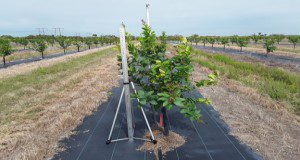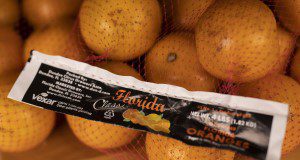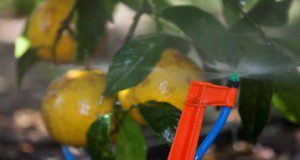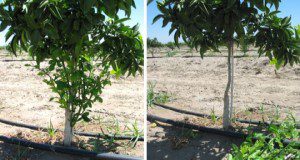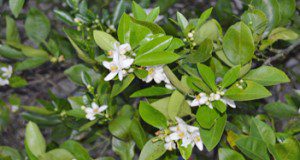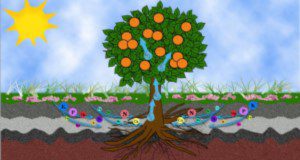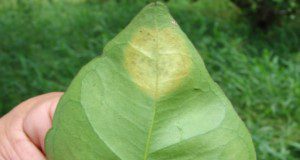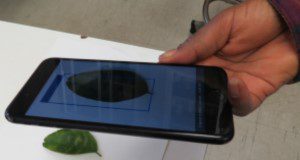Young citrus trees require optimal irrigation management for vigorous vegetative growth, leaf flushing, and establishment of a dense canopy. Poor irrigation practices, such as infrequent irrigation or irrigating without using irrigation scheduling tools, could be costly. Besides excessive loss of water and nutrients, the growth of young trees might be impacted by an excess or deficit of water. Crop water stress in young trees directly affects yield and fruit quality. This new 2-page publication of the UF/IFAS Department of Soil and Water Sciences, written by Davie Kadyampakeni and Sandra Guzmán, covers some strategies for optimizing young tree care and irrigation management to in turn optimize grove efficiency and productivity.
https://edis.ifas.ufl.edu/ss701
Tag: UF/IFAS Citrus Research and Education Center
Quick Reference Guide to Postemergence Herbicides for Citrus Weed Control
This quick reference table will provide growers with information (suggested rates, use restrictions, etc.) on different herbicides used in citrus. The herbicide table, prepared based on the Florida Citrus Production Guide, will aid growers to select an appropriate postemergent herbicide program in citrus groves. Written by Ramdas Kanissery, Camille E. McAvoy, Jamie D. Burrow, Stephen H. Futch, Brent A. Sellers, and S. Shea Teems, and published by the UF/IFAS Horticultural Sciences Department.
https://edis.ifas.ufl.edu/hs1410
Nutrition and Irrigation Management for Florida HLB-Affected Trees
To improve production of huanglongbing (HLB) affected trees, nutrition, irrigation, and soil pH should be considered together, because each can influence the efficacy of the others in overcoming the effects of HLB on tree performance. This two-sided poster published by the UF/IFAS Horticultural Sciences Department through the UF/IFAS Citrus Research and Education Center was written by Tripti Vashisth, Davie Kadyampakeni, and Jamie D. Burrow.
https://edis.ifas.ufl.edu/hs1367
Management of Citrus Tree Canopies for Fresh-Fruit Production
Canopy management is a useful tool to induce precocity and maintain high production of optimum-sized, high-quality fruit. The aim of this new 8-page publication of the UF/IFAS Department of Soil and Water Sciences is to provide growers with practical tools with which to manage their trees for maximum fresh-fruit yield, quality, and profitability. Written by Andrew Krajewski, Arnold Schumann, Tim Ebert, Chris Oswalt, Rhuanito S. Ferrarezi, and Laura Waldo.
https://edis.ifas.ufl.edu/ss698
Management Options for Improving Flowering in Citrus Production
The final fruit yield and, ultimately, returns a grower receives from any given harvest is directly related to the number of viable flowers that are generated and the proportion of those flowers that produce fruit. A grower can improve the ability for their trees to consistently produce a profitable crop of fruit by understanding the steps involved in flowering and controlling the transition to reproductive growth. This new 6-page publication of the UF/IFAS Horticultural Sciences Department was written by Leigh Archer, Miurel Brewer, Bikash Adhikari, Eduardo Esteves, Christopher Vincent, and Tripti Vashisth.
https://edis.ifas.ufl.edu/hs1399
Movement of Plant Nutrients
This new two-page document discusses soil-applied and foliar fertilization for citrus trees as well as mobile and immobile nutrients and how they affect the choice of fertilization. Written by Tripti Vashisth and Chris Oswalt, and published by the UF/IFAS Horticultural Sciences Department.
https://edis.ifas.ufl.edu/hs1373
Citrus Diseases Exotic to Florida: Citrus Leprosis
This article is one in a series designed to provide important information on the causal agent, symptoms, and transmission of exotic citrus diseases. Disseminating the information about the diseases to the citrus industry may prevent their introduction and spread in Florida. This 5-page document will focus on the exotic viral disease citrus leprosis. This is a major revision of an article originally published in 2006. Written by O. Batuman, A. Levy, P. Sieburth, A. M. Paolillo, K.-R. Chung, and R. H. Brlansky, and published by the UF/IFAS Plant Pathology Department.
https://edis.ifas.ufl.edu/pp148
Computer Tools for Diagnosing Citrus Leaf Symptoms (Part 2): Smartphone Apps for Expert Diagnosis of Citrus Leaf Symptoms
Visual identification of nutrient deficiencies in foliage is an important diagnostic tool for fine-tuning nutrient management of citrus. This new 2-page article describes a new smartphone app that uses a trained neural network to identify disease and pest symptoms on citrus leaves through your phone’s camera. Written by Arnold Schumann, Laura Waldo, Perseveranca Mungofa, and Chris Oswalt, and published by the UF/IFAS Department of Soil and Water Sciences.
https://edis.ifas.ufl.edu/ss691
Computer Tools for Diagnosing Citrus Leaf Symptoms (Part 1): Diagnosis and Recommendation Integrated System (DRIS)
This new 2-page article provides instructions for using the Diagnosis and Recommendation Integrated System, or DRIS, a web tool designed for analyzing leaf nutrient concentrations of Florida citrus. Written by Arnold Schumann and published by the UF/IFAS Department of Soil and Water Sciences.
https://edis.ifas.ufl.edu/ss683
